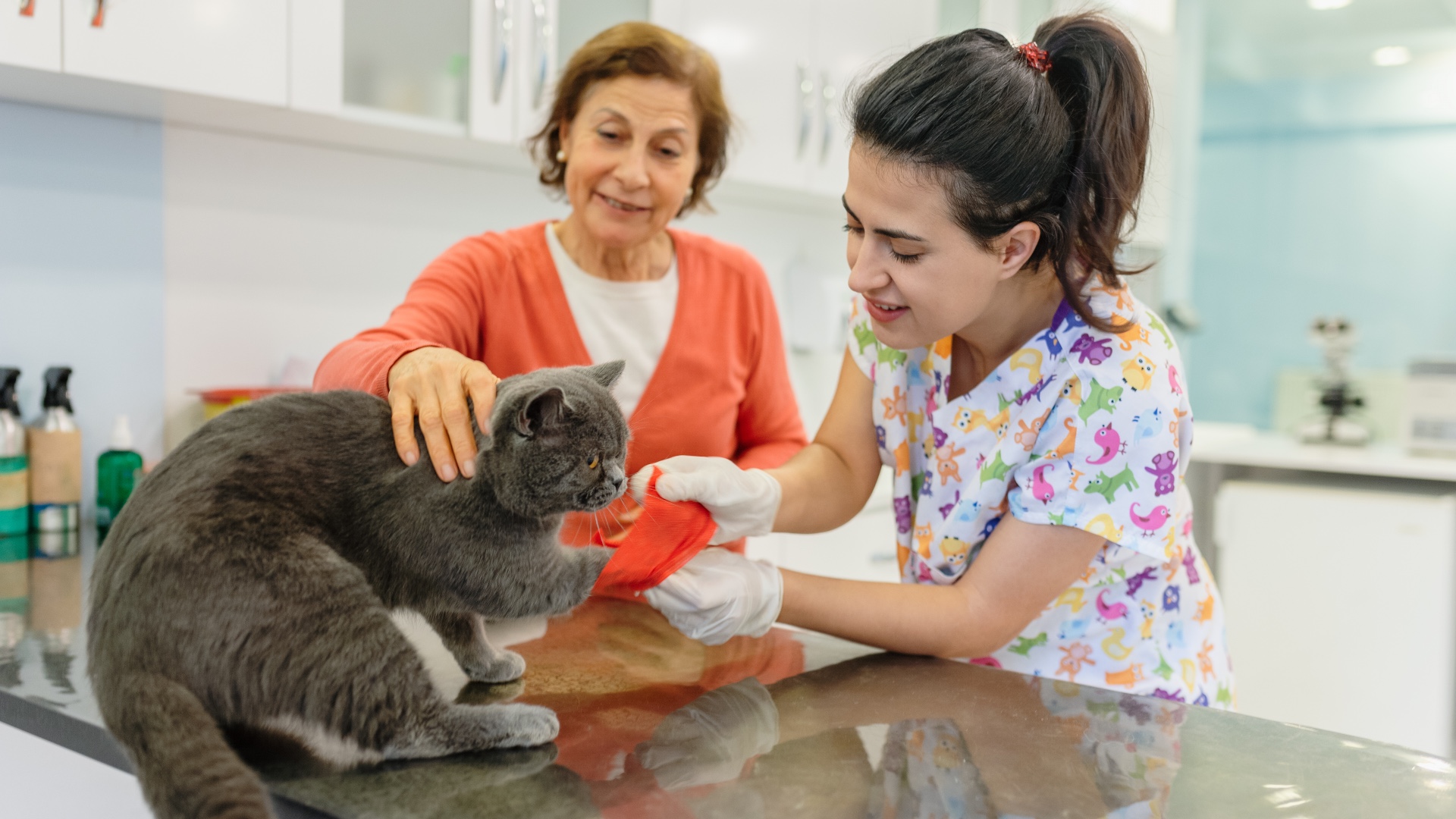Worried your cat is in pain? Vet technician reveals seven signs to look out for
Cats often disguise when they're in pain, so here's seven signs and signals to look out for that indicate your feline friend needs to see a vet

Unlike us humans, our feline friends can't tell us when they're in pain, or feeling unwell. That's why it's so important as a pet parent to be able to quickly and easily spot the signs of pain in cats.
Thankfully, registered vet technician and certified cat behavior consultant, Tabitha Kucera, has come to the rescue with a helpful Instagram post that will make recognizing that your cat is in pain that little bit easier.
"Your cat is communicating with you all of the time. They use their body to show you when they're feeling comfortable and when they're feeling sore or unwell. The signs of cat pain aren't subtle, we just need to learn how to recognize them," she explains.
If you're asking the question 'is my cat sick?' stick with us because we're sharing with you Kucera's top seven signs and signals that indicate your cat is in pain. Check out her useful infographic below or keep reading for all the details.
A post shared by Tabitha RVT, Cat & Dog Trainer (@chirrupsandchatter)
A photo posted by on
1. General mobility: Kucera says it's important to look at your cat's ease and fluidity of movement. Are they protective of a part of their body, or hesitant to put weight on a limb? "Your cat may try to curl up into a ball, or sit hunched in a crouched position, with their back curved higher than normal and their head lowered." They may also tuck their legs under their body instead of stretching out on their side.
2. Temperament: "Any change in their daily activity should be discussed with your vet," Kucera advises. "Consider frequency and intensity of play, as well as any changes in how they greet/interact with you."
3. Eating and drinking: Pay attention to your cat's eating and drinking habits. If your cat's not eating or drinking, you'll want to speak with your vet. The same goes for if their intake has decreased, or if they're eating slower than usual.
PetsRadar Newsletter
Get the best advice, tips and top tech for your beloved Pets
4. Grooming: Any change in the frequency or intensity of grooming habits is something to watch out for, says Kucera. Especially, "licking, biting, or scratching at a particular spot," as well as "frequent, intense grooming to a particular part of their body." A complete lack of grooming and appearing unkempt, is also a sign your cat may be in pain.
5. Resting and relaxing: Is your cat restless? Do they have difficulty getting up? Are they sleeping more, or hiding away? Changes to resting behaviors can indicate a problem, as can any differences in facial expressions, such as grimacing, glazed eyes, enlarged pupils, and flattened ears.
6. Performing activities: Kucera says litter box habits often provide clues as to your cat's health and wellbeing. If they urinate or defecate outside their box, have difficulty getting in and out, or are unable to squat, they could be experiencing pain. Also look out for any avoidance when it comes to jumping, or struggling to jump as high as they were previously able to.
7. Social interactions: "Your cat may experience increased irritability if they're in pain," explains Kucera. "They may begin to growl or hiss when other people or pets approach, feel uncomfortable being held, resent being brushed or combed. They may bite or scratch when a person touches or moves the painful area, or even in anticipation of being touched."
According to Kucera, it's important to monitor your cat on a daily basis so that you come to learn what's normal behavior for them and what's not.
"Learn your cat's "normal" and pay attention to any changes. It can be helpful to keep a diary to track appetite, vomiting, bowl movements, etc."
If you're at all worried about your feline friend or you spot any changes, or out of the ordinary behavior, we recommend you speak with your vet.

Kathryn is a freelance writer who has been a member of the PetsRadar family since it launched in 2020. Highly experienced in her field, she's driven by a desire to provide pet parents with accurate, timely, and informative content that enables them to provide their fur friends with everything they need to thrive. Kathryn works closely with vets and trainers to ensure all articles offer the most up-to-date information across a range of pet-related fields, from insights into health and behavior issues to tips on products and training. When she’s not busy crafting the perfect sentence for her features, buying guides and news pieces, she can be found hanging out with her family (which includes one super sassy cat), drinking copious amounts of Jasmine tea and reading all the books.
